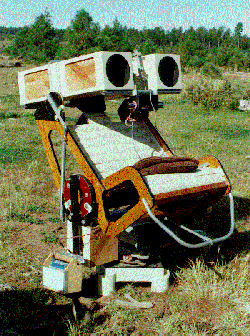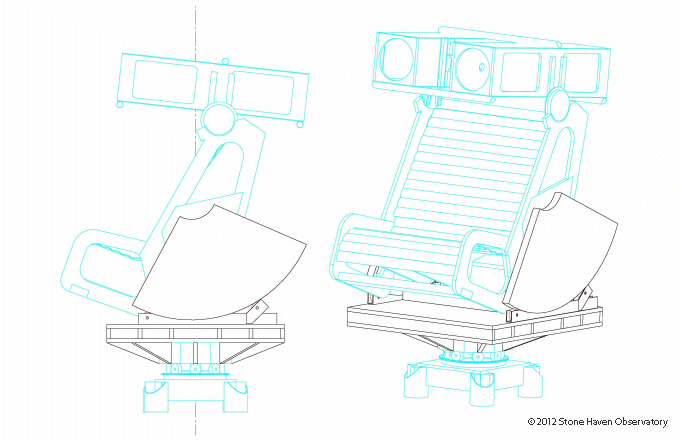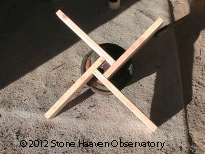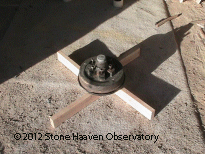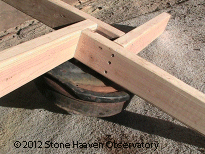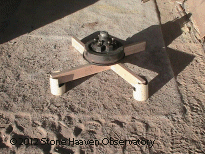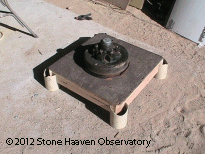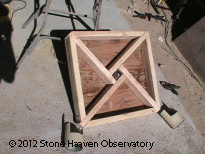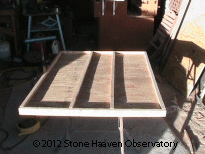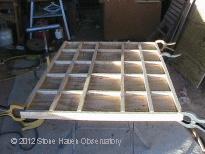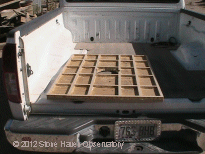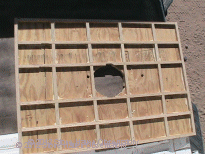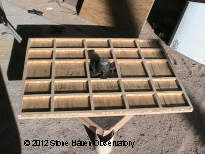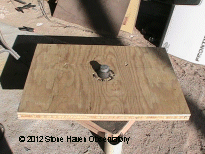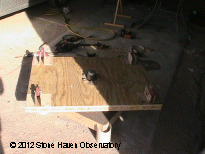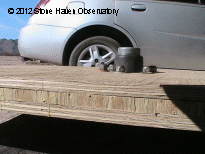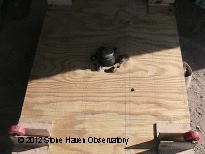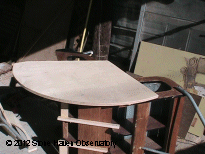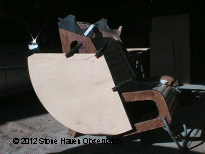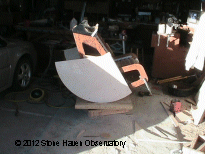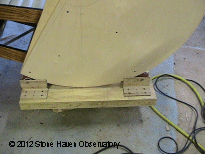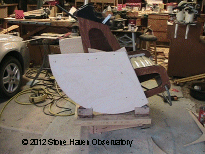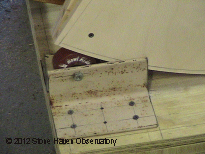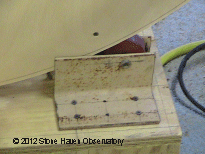The New Binocular Chair
In the late 1980's, Pierre Schwaar was a local legend around the Phoenix telescope maker's community. His optics were exemplary and his stream of new, innovative ideas could make NASA take notice. He was a force of nature among telescope makers, coming up with a 16" F/5 "Telescope-Go-Round", the "Big Foot" mount and his 8" F/4.2 Binocular Chair. He tinkered constantly, ever refining and tweaking his inventions to work better and better.
While there was never a doubt of his mirror making abilities, there was some about his mechanical skills. Some of his tinkering was due to necessity-fatally flawed details in engineering on the path from his inventive mind and his limited materials. While his workmanship was high in quality, the design phases were somewhat limited. Plans went from his head to the cutting table or lathe, without much consideration given to fine details.
This is so much the tragedy, since many parts from one project went to build the next. Sometimes it worked, sometimes not.
I found this out in the first restoration of the BinoChair. I spent 5 years, off and on, working on it, only to see the design flaws take their toll upon completion. It was my intent then and there to do a complete structural analysis of the system as a whole, and rebuild the chair to make it more user friendly.
The results of this redesign will be presented here. Click on images to enlarge.
|
|
Pierre's chair in ~1990. |
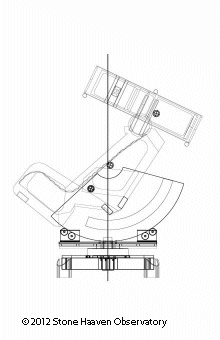 |
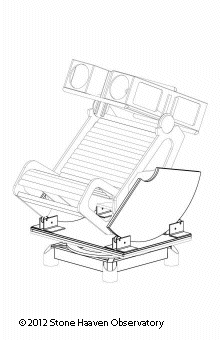 |
|
| First Draft | Basic Redesign | |
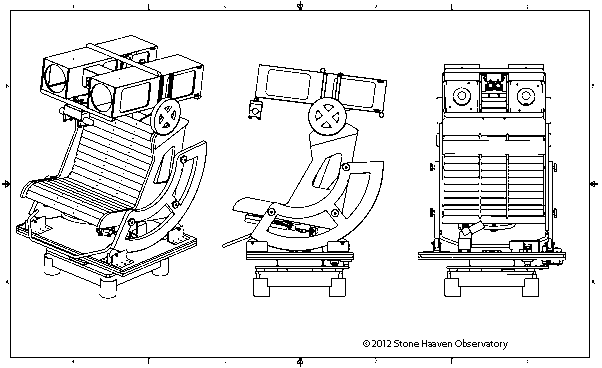 |
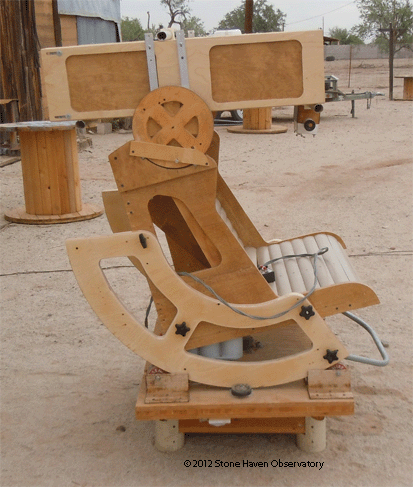 |
|
| Current Configuration | 8/12/12 |
The above images show something of the progression of ideas that ran through my head in redesigning the chair. Several options were explored initially, but this one made it to the drawing board. The first draft used the existing chair, base and drive system, while replacing the azimuth box with a torsion box for stiffness and a larger altitude bearing for stability. The blue lines indicate what stays the same and the black indicate the changes.
The second draft show the entire base being replaced after studying the balance characteristics of the first draft. Making the base wider and changing the drive system made it a LOT more stable, lower to the ground and smoother in azimuth. The base design was built over the thanksgiving weekend in 2007.
The current configuration is shown in a CAD drawing. lick for a PDF. A picture taken 8/12/12 is also shown.
The Base
The Table
The Main Altitude Bearing
Fighting problems with a shifting center of gravity, I decided to rebuild the sides of the chair. The problems were
1) People are different.
2) The chair couldn't adapt to different conditions
3) The chair sides didn't have enough material to mount the rail solution.
4) The chair sides also had too many holes in them.
Different people have different distributions of differing amounts of mass. As a more massive person sits in the chair, they shift the center of mass of the whole system. This causes balance and altitude motor loading problems as the load shifts. I came up with a couple solutions. One is to counter the shift by adding weights to the backside of the alt bearings, but this requires I carry many counterweights, and the whole idea was to avoid that. The one I chose was to make the chair and OTA adjustable foreward and backward, to reposition the center of rotation according to the weight of the occupant. I devised a system of T-rails, with bolts through the alt bearings. Two parallel rails will easily accommodate the load, but when I went to mount them on the chair, I found there wasn't enough material there to support them both. I took the chair apart to figure it out and, looking at the individual chair side and seeing all the previous holes, I decided to build new ones with sufficient mounting materials and consistant thickness.
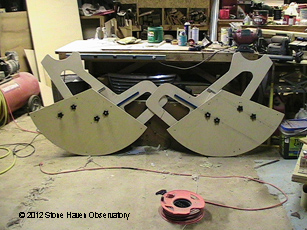 |
The new sides, side by side, ;-) showing the new bearings, the star-bolts that mount to the rails and fasten the bearings to the chair sides. |
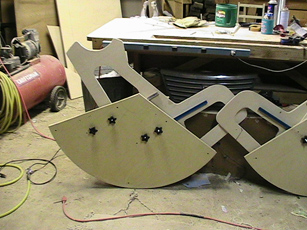 |
A little closer view of one new assembly. |
